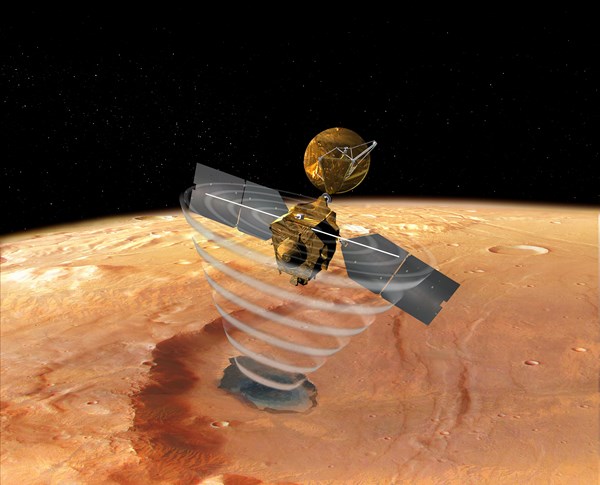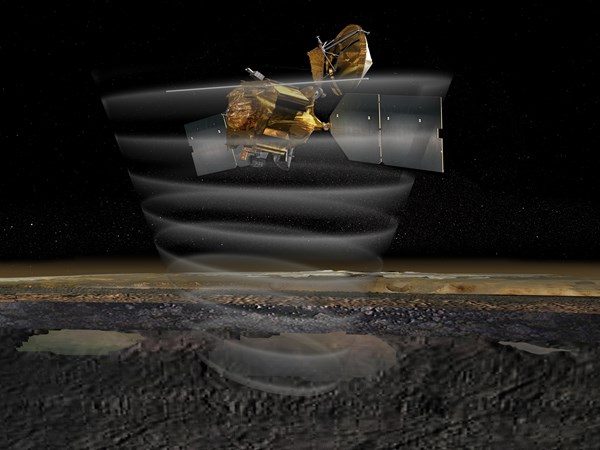REDONDO BEACH, Calif., Sept. 19, 2006 (PRIMEZONE) -- An antenna built by Northrop Grumman Corporation (NYSE:NOC) deployed successfully September 16 onboard NASA's Mars Reconnaissance Orbiter (MRO) for an experiment that continues the search for liquid or frozen water in the first few hundreds of feet of Mars' crust.
Images accompanying this release are available at: http://media.primezone.com/noc/
SHARAD's antenna, weighing less than three kilograms (6.6 pounds), deployed to a length of 10 meters (33 feet) to provide the configuration required once the spacecraft reached its circular, two-hour orbit around Mars.
The antenna was built by Astro Aerospace, a business unit of Northrop Grumman's Space Technology sector, for the Italian Space Agency's SHAllow RADar (SHARAD) experiment. The SHARAD experiment was built by Alcatel Alenia Space Italia and flown on the NASA spacecraft. NASA's Jet Propulsion Laboratory, operated by the California Institute of Technology, manages the MRO mission for NASA's Science Mission Directorate.
"This represents another successful on-orbit achievement by a Northrop Grumman system, adding to an impressive record of more than 2,000 flawless deployments," said Tom Romesser, vice president of technology development for Northrop Grumman Space Technology. "Astro Aerospace alone, among designers and manufacturers of space deployables, has a 100 percent success rate on hundreds of flight-specific deployable units."
SHARAD will probe Mars' subsurface using radar waves using a 15-25 MHz frequency band to get the desired high depth resolution.
The radar wave return, which is captured by the SHARAD antenna, is sensitive to changes in the electrical reflection characteristics of the rock, sand, and any water present in the surface and subsurface. Water, like high-density rock, would have a very strong radar return. Changes in the reflection characteristics of the Martian subsurface, such as layers deposited by geological processes over the life of the planet, also can be detected.
This antenna uses a similar technology to the MARSIS antenna built by Astro Aerospace for the European Mars Express spacecraft. Last year, the MARSIS antenna deployed to 40 meters (132 feet) length onboard the Mars Express once it entered the desired orbit around Mars.
For more than 40 years, Northrop Grumman's Astro Aerospace has pioneered the technology of space deployable structures including AstroMesh furlable antennas and reflectors, truss masts, telescopic booms, storable tubular extendible members and planar-array deployment.
Northrop Grumman Corporation is a global defense company headquartered in Los Angeles, Calif. Northrop Grumman provides technologically advanced, innovative products, services and solutions in systems integration, defense electronics, information technology, advanced aircraft, shipbuilding and space technology. With more than 120,000 employees and operations in all 50 states and 25 countries, Northrop Grumman serves U.S. and international military, government and commercial customers.

